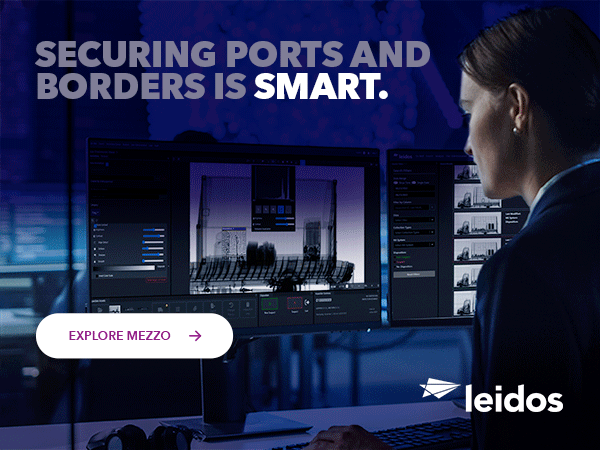MERCOSUR launches Customs Data Model based on WCO standard and takes a leap forward in terms of data exchange
22 February 2024
By Leonardo Pellegrino, Single Window for Foreign Trade Project, Directorate of Customs Process Reengineering, Argentina General Customs BureauThe Southern Common Market (known as MERCOSUR) is a regional integration process initially established by Argentina, Brazil, Paraguay and Uruguay, and subsequently joined by Venezuela (currently suspended) and Bolivia (whose accession procedure is still underway). MERCOSUR makes its decisions through three bodies: the Council of the Common Market (CMC), which is the main MERCOSUR body that conducts the integration process politically; the Common Market Group (GMC), which oversees the day-to-day functioning of the bloc; and the Mercosur Trade Commission (CCM), which is responsible for the administration of common commercial policy instruments.
On 2 August 2010, the members of MERCOSUR agreed to the elimination of double taxation for imports and the adoption of a single Customs Code, accompanied by the introduction of a common Customs document entitled “Documento Único Aduanero del Mercosur” (DUAM).
To develop the DUAM, the MERCOSUR countries had to (i) agree on the data to be exchanged, (ii) use a similar language, and (iii) harmonize the way in which the required data was to be submitted. A Customs data model was therefore created, ensuring interoperability of systems at the regional level. This was done as part of a project with the European Union (EU) called PADUEM (2004-2007), which was aimed at harmonizing legislation and regulations. The data model contained about 250 data elements, enabling information to flow seamlessly across the different IT systems of MERCOSUR countries.
The content and viability of the data model were evaluated by CCM Technical Committee No. 2 (Customs issues). This interdisciplinary work involved multiple CCM committees and subcommittees. In March 2012, during workshop on the WCO Data Model organized by the WCO Secretariat and Argentina Customs, the outcomes of the evaluation were presented, along with the similarities and differences between the DUAM data and the WCO Data Model in relevant procedures (Import/Export). WCO experts offered some suggestions, one of which was that the results of this comparison be submitted to the Data Model Projects Team (DMPT) which develops and maintains the WCO Data Model.
The GMC decided, through a Resolution, that the DUAM data model had to be aligned with the WCO Data Model, and in 2015 a new project called MODDA was launched for this purpose. A working group was established, and participation in the DMPT was initiated in order to develop a MODDA Information Package (MODDA IP) within the WCO Data Model[1] that reflects the requirements of MERCOSUR countries.
The working group mapped the list of regional data requirements to the WCO Data Model and developed the MODDA IP by matching selected data elements to the WCO Data Model. Non-matching elements were disclosed in the MODDA IP as “extensions”. The group submitted several Data Maintenance Requests in respect of data required in the DUAM but not represented in the WCO Data Model. Several of them were then incorporated in the WCO Data Model, thereby reducing the number of “extensions” in the MODDA IP.
Let’s look at a practical example. Information related to an advanced ruling on Customs classification was not included in the WCO Model. The DMPT accepted a corresponding DMR and created a new data set, numbered ID 448 and called “Binding Tariff Reference”, with the following description: “Reference number denoting a national or regional standard tariff classification of goods in the tariff nomenclature/statistics based on the Harmonized System”.
The working group encountered several challenges. Firstly, language was an issue; the WCO Data Model is published in English, and the DMPT representatives can speak English or French, whereas MERCOSUR representatives work in Portuguese and Spanish. The representatives in charge of coordination in each country therefore had to be able to work in one of the languages concerned, and the GMC Resolution No. 9/21 approving the MODDA was written in Spanish, Portuguese and English.
Moreover, assessing the need for a new data element in the Model, and how to express it, was technically difficult. Experts had to investigate whether data requirements were already represented through existing international standards and, if so, whether the way they were represented met the requirements of national or regional systems. On several occasions, the group received technical assistance from WCO experts and specialists from the private sector.
The work done by the group was finalized in 2019. In 2021, it became obligatory for MERCOSUR Customs administrations to use the MODDA Data Model when exchanging Customs declaration data at import and export within MERCOSUR, as well as in every project where there is an exchange of such information, including with third countries or groups of countries.
The use of a data model based on the WCO standard opens new doors in terms of data exchange. MERCOSUR countries are now looking to adapt their current exchange of information model to enable any Customs administration using the WCO Data Model to access data stored in INDIRA, or provide data to MERCOSUR Members if the legal framework allows such an exchange of information.
More information
dga-internacionales@afip.gob.ar
[1] In order to simplify its architecture, the components of the WCO Data Model are organized into small building blocks called Information Packages (IPs). Each Information Package is a subset of the WCO Data Model which is relevant to a specific context.


